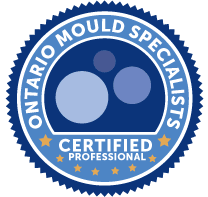
There is no safe level of airborne asbestos exposure. The mineral fibres can linger in the air for 48 to 72 hours after a disruption.
Asbestos is classified as a carcinogen by several international organizations and inhalation of asbestos fibres is a significant health hazard. It's crucial to be aware when home asbestos tests are needed and if it requires encapsulation or full removal.
As a homeowner, asbestos awareness is vital to your health and the health of your loved ones.
What Is Asbestos?
Asbestos is a mineral fibre that has been used in building construction materials as insulation and as a fire retardant.
Exposure is the number one cause of work-related deaths in the world and 90,000 people die due to an illness related to prolonged and frequent exposure.
Asbestos can have very serious health implications when the fibres are inhaled into the lungs, where it can cause asbestosis and pleura. Long-term exposure to asbestos can also increase the chances of lung cancer, ovarian cancer, laryngeal cancer, and mesothelioma.
Where Do You Find Asbestos?
Asbestos is mostly found in:
- Construction materials such as shingles, ceiling and floor tiles, drywall, and insulation in walls or around pipes
- Friction parts in a ca,r like the clutch, brake, and transmission parts
- Heat-resistant fabrics
- Textured paint and patching compounds.
Older homes and buildings built before 1980 are likely to have higher amounts of asbestos than you'd find today due to restrictions. Even if there is asbestos present in your home, it only becomes hazardous once these fibrous particles are airborne from disruption of the materials where it can be found.
Home Asbestos Tests
Health Canada suggests hiring a professional to test your home for asbestos before doing any sort of remodelling, demolition, or additions. This could potentially disturb materials that contain asbestos and cause them to become airborne.
Visual inspection is not enough. A sample needs to be sent to a lab to test for asbestos. The EPA has a set of guidelines on how to samples of asbestos should be taken.
Professional Removal
There's asbestos in my home! What do I do now?
The next step would be to hire a certified team to make sure your home remains safe. How the situation is handled depends on where it was found, the state of the material, and if the asbestos is easily broken apart so that it could become airborne.
If asbestos is well contained and cannot be easily broken apart, then the solution may be to encapsulate and monitor the environment for future damage to prevent fibres from becoming airborne in your home.
Removal is usually the last resort. Hiring a professional company with the correct certifications for removal is your best option. Your health is at risk.
Protect Yourself
When it comes to asbestos removal, this is not a DIY job. Home asbestos tests and removal should be done by a trained and certified team of professionals to safely get the job done.
Contact Ontario Mould Specialists for testing and removal of asbestos in your home.

